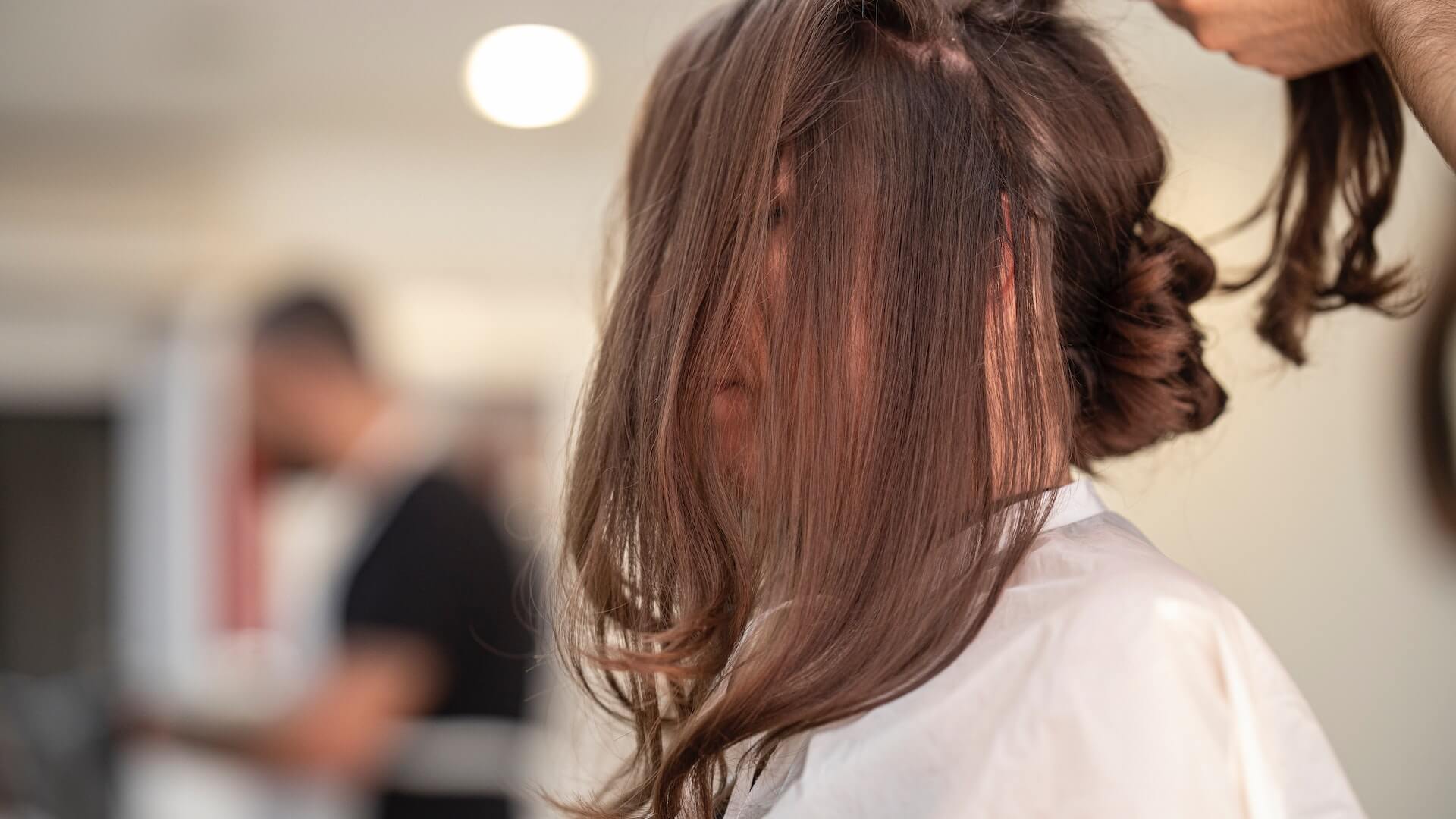A healthy head of hair is the epitome of beauty and confidence, but maintaining it can be a challenge. Finding the right hair care routine can be overwhelming, with so many products and techniques out there, it’s easy to get lost. Whether you have curly or straight hair, colored or natural, long or short, everyone can benefit from a little extra hair care love. In this post, we’ll share the ultimate guide to healthy and gorgeous hair. From tips on how to properly wash and condition your hair to the best products for your hair type, we’ve got you covered. We’ll also cover some of the best-kept secrets for shiny, smooth, and strong hair. So grab a cup of tea, and let’s dive in!
Introduction to the importance of healthy and gorgeous hair
Our hair is often referred to as our crowning glory, and for a good reason. Healthy and gorgeous hair not only adds to our overall appearance but also boosts our confidence and self-esteem. It is a reflection of our overall health and well-being.

Having luscious, shiny locks is not just about vanity; it is an indicator of how well we take care of ourselves. When our hair is in good condition, it signifies that we are nourishing our bodies with the right nutrients, practicing good hygiene, and being mindful of our hair care routines.
Furthermore, healthy hair is more resilient and less prone to damage. It can withstand the daily stresses we put it through, such as heat styling, chemical treatments, and environmental factors like pollution and harsh weather conditions. By maintaining the health of our hair, we can prevent common problems like breakage, split ends, and excessive hair loss.
Understanding your hair type and its needs
Just like our skin, our hair varies in texture, thickness, and moisture levels, requiring different care routines and products to maintain its optimal condition. By identifying your hair type, you can tailor your hair care regimen accordingly, addressing any specific concerns and maximizing the potential of your locks.
There are several common hair types, including straight, wavy, curly, and tightly coiled. Straight hair tends to be smooth and sleek, but it may be prone to oiliness. Wavy hair falls somewhere between straight and curly, often benefiting from lightweight products that enhance its natural texture. Curly hair is characterized by its spirals or waves, and it typically requires extra moisture and hydration to combat frizz and maintain definition. Tightly coiled hair, commonly known as kinky or afro-textured hair, is delicate and prone to dryness, requiring frequent moisturizing and protective styles to promote healthy growth.
Once you have determined your hair type, it’s essential to choose the right products and techniques that complement its specific needs. For example, those with straight hair may prefer lightweight, oil-controlling shampoos and conditioners, while individuals with curly hair may opt for moisturizing and defining products that enhance their natural curls. It’s also vital to consider factors such as heat styling, environmental damage, and any chemical treatments your hair may have undergone, as these can impact its overall health and appearance.
Daily hair care routine for healthy hair
Here are some expert-approved tips and tricks to incorporate into your daily hair care routine:

1. Start with gentle cleansing:
Use a sulfate-free shampoo that suits your hair type and scalp condition. Massage the shampoo into your scalp using your fingertips in gentle circular motions to stimulate blood flow and remove dirt and excess oils. Rinse thoroughly to ensure no product residue is left behind.
2. Condition regularly:
Conditioning is a crucial step to nourish and hydrate your hair. Choose a conditioner that matches your hair’s needs, such as a moisturizing conditioner for dry hair or a volumizing conditioner for fine hair. Apply the conditioner from mid-length to ends and leave it on for a few minutes before rinsing.
3. Avoid excessive heat styling:
Heat styling tools like flat irons, curling irons, and blow dryers can damage your hair if used excessively. Opt for air-drying whenever possible or use heat protectant products before styling. If you do use heat tools, set them to a lower temperature to minimize damage.
4. Protect your hair from environmental factors:
Sun exposure, wind, and pollution can take a toll on your hair’s health. Shield your hair by wearing a hat or using UV protection sprays when outdoors. Additionally, avoid swimming in chlorinated water without applying a protective leave-in conditioner or wearing a swim cap.
5. Use the right hairbrush:
Choose a brush with soft bristles or a wide-toothed comb to minimize breakage and prevent unnecessary damage. Start detangling from the ends and work your way up gradually to avoid pulling or causing knots.
6. Be mindful of your diet:
A healthy diet plays a crucial role in maintaining vibrant hair. Include foods rich in vitamins, minerals, and proteins, such as fruits, vegetables, lean meats, and nuts. Stay hydrated by drinking an adequate amount of water daily to promote hair hydration from within.
7. Regular trims:
Schedule regular trims every 6-8 weeks to get rid of split ends and maintain the overall health of your hair. Regular trims prevent split ends from traveling up the hair shaft and causing further damage.
The do’s and don’ts of washing and conditioning your hair
Proper hair washing and conditioning techniques are crucial for maintaining healthy and gorgeous locks. To ensure you’re giving your hair the care it deserves, it’s important to know the do’s and don’ts of this essential hair care routine.
Firstly, let’s focus on the do’s. Do choose a shampoo and conditioner that is suitable for your hair type. Whether you have dry, oily, or damaged hair, selecting products specifically formulated for your needs will provide the best results. Additionally, do rinse your hair thoroughly with lukewarm water before applying shampoo to remove any excess dirt, oil, or product buildup.
When applying shampoo, do gently massage the product into your scalp using your fingertips. This will help to stimulate blood circulation and ensure a thorough cleanse. Rinse the shampoo completely from your scalp and hair, making sure no residue is left behind.
Moving on to conditioning, do apply conditioner from the mid-lengths to the ends of your hair. These areas tend to be drier and more prone to damage. Use a wide-tooth comb or your fingers to evenly distribute the conditioner and detangle any knots or tangles. Leave the conditioner on for the recommended time, usually a few minutes, to allow it to deeply nourish and hydrate your hair.
Now, let’s talk about the don’ts. Don’t use hot water when washing your hair as it can strip away natural oils and leave your hair dry and brittle. Stick to lukewarm or cool water to maintain the moisture balance in your locks.
Another important don’t is avoiding over-washing your hair. While it may be tempting to wash your hair every day, doing so can strip away the natural oils that keep your hair healthy and shiny. Instead, aim to wash your hair every 2-3 days or as needed based on your hair type and lifestyle.
Lastly, don’t forget to avoid applying conditioner directly to your scalp. This can weigh down your hair and make it appear greasy. Focus on the mid-lengths and ends where your hair needs the most hydration.
Tips for choosing the right shampoo and conditioner for your hair type
First and foremost, it’s important to identify your hair type – whether it’s oily, dry, normal, or a combination of these. This knowledge will serve as a foundation for selecting the right products that cater to your unique requirements.

For those with oily hair, opt for a clarifying shampoo that effectively removes excess oil and buildup without stripping away essential moisture. Look for formulas that are labeled as oil-free or volumizing to help control the grease and add body to your hair. Pair it with a lightweight conditioner that won’t weigh your hair down.
If you have dry hair, prioritize products that provide deep hydration and nourishment. Look for shampoos and conditioners that are infused with moisturizing ingredients like argan oil, shea butter, or coconut oil. These natural oils will help restore moisture, promote shine, and prevent further dehydration.
For those with normal hair, you have the flexibility to choose from a wide range of shampoos and conditioners. Look for products that offer a balance between cleansing and moisturizing, without being too heavy or stripping. Consider experimenting with different formulas to find the one that works best for you.
If you have color-treated or chemically processed hair, it’s crucial to invest in products specifically formulated for such hair types. Look for shampoos and conditioners that are sulfate-free and have color-protecting properties. These will help preserve the vibrancy of your hair color and prevent fading.
Additionally, consider your specific hair concerns or goals. If you’re aiming for added volume, look for volumizing shampoos and conditioners that provide lift and body. If you’re battling frizz, opt for smoothing and anti-frizz formulas that tame unruly hair.
Remember, everyone’s hair is unique, so don’t be afraid to experiment and adjust your hair care routine as needed. And always pay attention to the ingredients list, avoiding harsh chemicals that can strip your hair of its natural oils.
Techniques for proper hair drying and styling to prevent damage
Many people unknowingly subject their hair to excessive heat, tension, and harsh products, which can lead to damage and breakage. To prevent these issues, it is important to adopt the right practices when drying and styling your hair.
First and foremost, always towel dry your hair gently after washing. Instead of vigorously rubbing your hair with a towel, which can cause friction and breakage, gently squeeze out the excess water. It is also beneficial to use a microfiber towel or an old cotton t-shirt, as these materials are gentler on the hair compared to regular towels.
When using heat styling tools like blow dryers, straighteners, or curling irons, it is crucial to apply a heat protectant spray beforehand. This will create a barrier between the heat and your hair, reducing the risk of damage. Additionally, choose the lowest heat setting that is effective for your desired hairstyle and limit the amount of time the heat is applied to your hair.
To prevent unnecessary tension and breakage, avoid using tight hair ties or accessories that pull on your hair. Opt for hair-friendly alternatives such as scrunchies or spiral hair ties that provide a secure hold without causing damage. When styling, try not to pull or tug on your hair excessively, as this can weaken the strands and lead to breakage.
Another important technique for proper hair drying is to allow your hair to air dry whenever possible. If you must use a blow dryer, use the cool or low heat setting and keep the dryer at a safe distance from your hair. Directing the airflow downwards along the hair shaft will help to smooth the cuticles and reduce frizz.
In addition to these techniques, it is crucial to choose hair care products that are suitable for your hair type and needs. Look for shampoos and conditioners that are free from harsh chemicals and sulfates, as these can strip the hair of its natural oils and cause dryness. Using a leave-in conditioner or hair serum can also provide added nourishment and protection.
The benefits of regular trimming and how to do it at home or at a salon
One of the main benefits of regular trimming is that it helps to get rid of damaged and split ends, which can make your hair look dull and lifeless. By removing these damaged ends, you allow your hair to grow stronger and healthier. Trimming also helps to prevent the splitting of the hair shaft, which can lead to further damage if left untreated.

Now, you might be wondering whether you should trim your hair at home or visit a salon. The choice ultimately depends on your comfort level and the complexity of the haircut you desire. If you have simple, straight hair and just need a basic trim, you can certainly do it at home with the right tools. However, if you have more complex or layered haircuts, it is recommended to visit a professional stylist who can ensure precision and a desired outcome.
If you decide to trim your hair at home, make sure you have a sharp pair of hair-cutting scissors specifically designed for this purpose. Start by sectioning your hair and focusing on small sections at a time. Remember to only trim off a small amount, usually around 1/4 to 1/2 inch, to avoid cutting off too much length.
On the other hand, visiting a salon for a trim can provide you with the expertise and skill of a trained hairstylist. They can analyze the condition of your hair, recommend the best trimming technique, and ensure a clean and professional result.
Regardless of where you choose to trim your hair, it is recommended to trim it every 6-8 weeks, or as needed. This timeframe allows for the removal of any split ends before they travel up the hair shaft and cause further damage.
Natural remedies and DIY hair masks for nourishing and strengthening your hair
Taking care of your hair doesn’t always have to involve expensive products or salon treatments. There are plenty of natural remedies and DIY hair masks that can nourish and strengthen your hair, leaving it looking healthy and gorgeous.
One of the most popular natural ingredients for hair care is coconut oil. This versatile oil is packed with essential fatty acids, vitamins, and minerals that can deeply moisturize your hair and scalp. To create a DIY hair mask with coconut oil, simply warm up a few tablespoons of the oil and apply it generously to your hair. Leave it on for at least 30 minutes or overnight for maximum benefits, then rinse it out thoroughly with shampoo.
Another great natural ingredient for hair care is avocado. Avocado is rich in vitamins A, E, and D, as well as healthy fats that can help nourish and repair damaged hair. Mash up a ripe avocado and mix it with a tablespoon of honey and a tablespoon of olive oil to create a DIY hair mask. Apply this mixture to your hair, focusing on the ends, and leave it on for about 20 minutes before rinsing it out.
If you’re looking to add shine and strength to your hair, a DIY egg hair mask can do wonders. Eggs are packed with protein, which is essential for healthy hair growth. Simply whisk together one or two eggs, depending on the length of your hair, and apply the mixture to your damp hair. Leave it on for about 15 minutes, then rinse it out with cool water to prevent the eggs from cooking.
For those with oily hair or a flaky scalp, a DIY apple cider vinegar rinse can help restore balance. Mix equal parts of apple cider vinegar and water, then pour this mixture over your hair after shampooing. Let it sit for a few minutes, then rinse it out thoroughly. The acidity of the vinegar helps remove excess oil and product buildup, while also balancing the pH of your scalp.
How to protect your hair from heat, sun, and environmental damage
One of the best ways to shield your hair from heat damage is by reducing the use of hot styling tools such as flat irons, curling irons, and hair dryers. Excessive heat can strip the hair of its natural moisture, leaving it dry, brittle, and prone to breakage. If you must use these tools, always apply a heat protectant spray or serum beforehand to create a barrier between the heat and your hair.

When it comes to sun protection, wearing a hat or scarf can be a simple yet effective solution. This not only shields your hair from harmful UV rays but also helps to prevent color fading and dryness. Additionally, using hair products that contain UV filters can provide an extra layer of protection against sun damage.
Environmental factors such as pollution and humidity can also take a toll on your hair. To combat this, regularly cleanse your hair and scalp to remove any build-up of pollutants and impurities. Opt for gentle, sulfate-free shampoos and conditioners that nourish and hydrate the hair without stripping away its natural oils. Deep conditioning treatments and hair masks can also help to replenish moisture and strengthen your hair, making it more resilient against environmental damage.
Advice for maintaining a balanced diet and lifestyle to promote hair health
Ensure that your diet is rich in essential nutrients that nourish your hair from within. Include foods that are high in protein, such as lean meats, fish, eggs, and legumes, as protein is the building block of hair. Additionally, incorporate plenty of fruits and vegetables into your meals, as they provide vital vitamins and minerals that support hair growth and strength.
Omega-3 fatty acids, found in foods like fatty fish, nuts, and seeds, are also beneficial for hair health. These healthy fats help keep the scalp hydrated and promote shiny, lustrous hair. Don’t forget to stay hydrated by drinking an adequate amount of water throughout the day, as dehydration can make your hair dry and brittle.
Furthermore, maintaining a balanced lifestyle is crucial for hair health. Excessive stress can contribute to hair loss and other hair-related issues. Therefore, find healthy ways to manage stress, such as practicing mindfulness, exercising regularly, or engaging in hobbies that bring you joy.
It’s also important to avoid harmful habits that can negatively impact your hair. Excessive heat styling, chemical treatments, and tight hairstyles can cause damage and breakage. Opt for gentle hair care practices, use heat protectant products, and give your hair regular breaks from styling to allow it to recover and grow.
Addressing common hair concerns such as dandruff, hair loss, and frizz
From pesky dandruff to frustrating hair loss and unruly frizz, these issues can take a toll on our confidence and overall hair health. Fortunately, there are effective ways to address these concerns and achieve the luscious locks we desire.
1. Dandruff:
This common scalp condition can be caused by various factors such as dry skin, sensitivity to hair products, or even a fungal infection. To combat dandruff, opt for shampoos containing active ingredients like zinc pyrithione or ketoconazole, which target the underlying causes. Regularly exfoliating your scalp with a gentle scrub can also help remove flakes and promote a healthier scalp.
2. Hair loss:
Losing hair can be distressing, but it’s important to remember that it’s a natural process. However, if you notice excessive hair shedding or thinning, it’s worth addressing the issue. Start by evaluating your lifestyle and diet, as poor nutrition and high-stress levels can contribute to hair loss. Incorporating nutrient-rich foods, like leafy greens and protein sources, into your meals can help promote hair growth. Additionally, using products with ingredients like minoxidil or saw palmetto extract can stimulate hair follicles and prevent further loss.
3. Frizz:
Dealing with frizzy hair can be a daily battle, especially in humid environments. To tame frizz, it’s crucial to keep your hair well-moisturized. Hydrating shampoos and conditioners, along with regular deep conditioning treatments, can help lock in moisture and reduce frizz. When styling, avoid excessive heat and opt for anti-frizz serums or leave-in conditioners. Additionally, using a wide-toothed comb or a brush with natural bristles can help distribute natural oils and minimize frizz.
Professional hair care treatments and salon services to consider
While it’s important to maintain a proper hair care routine at home, there are certain treatments that only trained professionals can provide to take your hair to the next level.

One popular option is a deep conditioning treatment. This luxurious treatment penetrates deep into the hair shaft, nourishing and hydrating your locks from within. It can help revive dry and damaged hair, leaving it soft, shiny, and more manageable. Deep conditioning treatments are especially beneficial for those with chemically treated or heat-damaged hair.
Another professional service to consider is a trim or haircut. Regular trims are essential for maintaining the health of your hair by preventing split ends from traveling up the hair shaft. Professional hairstylists can also provide expert advice on the best haircut to suit your face shape and hair texture, helping you achieve a flattering and stylish look.
For those looking to add volume or length to their hair, salon extensions or hairpieces can be a game-changer. Whether you desire voluminous curls, luscious waves, or long and sleek locks, extensions can give you the desired look without the wait.
Additionally, if you are struggling with frizzy or unruly hair, a keratin treatment may be the answer. This smoothing treatment helps to eliminate frizz, reduce curl, and improve overall manageability. It leaves your hair looking sleek, shiny, and more resistant to humidity.
Finally, if you are seeking a complete hair transformation, a professional hair color service can do wonders. Whether you want to cover grays, enhance your natural color, or experiment with a bold new shade, a skilled colorist can help you achieve the desired result while minimizing damage to your hair.
Conclusion
Taking care of your hair is essential for maintaining its health and beauty, and we have provided a comprehensive set of tips and tricks to guide you on this journey. By following our advice on proper hair care techniques, choosing the right products, and adopting a healthy lifestyle, you can achieve the luscious locks you’ve always dreamed of. Remember, consistency is key, so incorporate these tips into your daily routine and watch your hair transform into its most radiant and vibrant state. Embrace your crowning glory and shine on!



